Ultimate Japan Packing List: Everything you need to pack for Japan
Exciting! You’re creating your Japan packing list!
I’m excited for you, honestly – I’d like to visit Japan again. And then again. I just fell in love with the country – and the food, a lot. There’s so much we didn’t get to try!
Japan is quite a special place to go to. It’s quite its own world – there are strict rules and values. It’s just not as open and modern as many other places in the world. Therefore, it’s easy to offend people, and that’s very much not what you’d like, right?
So make sure to read up on what you should know before going to Japan. At the end of this article, I’ve listed some basics on how to dress in the country of the Rising Sun and what to watch out for. It’s not a complete list, of course, but it should help with packing for Japan.
This post might contain affiliate links, which means that if you purchase anything via them, we might earn a small commission – at no extra cost to you. Check our affiliate disclaimer for more information.
As an Amazon Associate we earn from qualifying purchases.
10 Things to add to your Japan Packing list
First things first – as in other packing lists, I’m not putting any numbers – I’m not telling you how much stuff to take. That’s a very individual thing, in my opinion. Some people prefer to change their clothes many times in the same day, and on the other end of the spectrum are people who can go in the same t-shirt many days in a row.
And second, first I’m giving you the basics that you should take with you no matter what the season, and then – items that you should add depending on the season that you’re visiting.
Note: try to pack as light as possible, as there is not a lot of space for storing luggage on Japanese trains. Or you might want to check out luggage forwarding services. Of course, for an extra cost.
1) Essentials
The main things to take when packing for Japan are, obviously, all the travel essentials – things like documents, which includes your visa, toiletries, first aid kit etc. You can check those things out – and get a printable packing list! – in my article on things to take to all your trips.
I’ll list some of them here as well because I like repeating things. Oops.
2) Shoes and socks
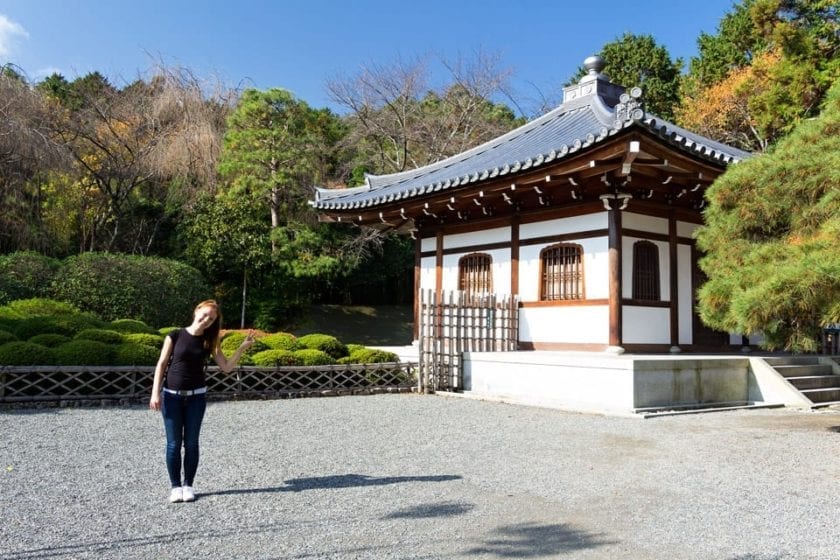
After the essentials, the most important thing to take is comfortable walking shoes. Since there are so many amazing things to see in Japan, you will have to walk a lot. It’s not pleasant to have blisters so make sure to pack comfortable shoes!
And ones that are easy to take off as well – in many places, for example, restaurants, shrines, and temples, you’ll probably have to leave your shoes at the door.
For the shoes, I’ll even recommend a number! It’s better to take two pairs of walking shoes with you so that if one pair gets wet, you have an extra pair to wear.
I like the barefoot type of shoes because they’re very comfortable and light. Not too many of them are waterproof, though.
This brings me to the socks – I’ll talk more about them a bit further down, but since you’ll have to take your shoes off in many places, make sure that your socks don’t have holes in them or any rude writings/signs.
3) Clothes
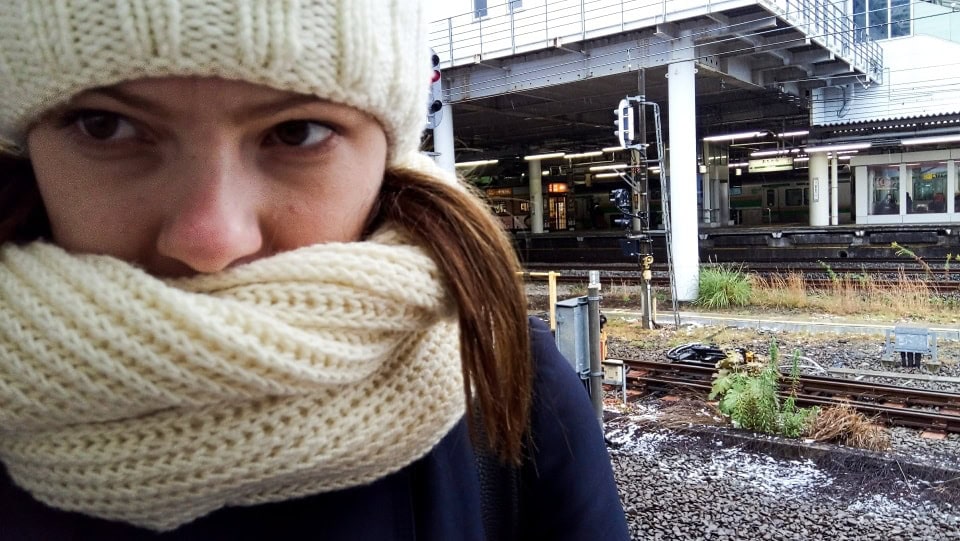
I’ll cover most of the rules on how to dress in Japan at the end of this article, but basically – smart casual is your best bet.
As for the specific seasons – again, I’ll cover them in them later. But in short – it’s a good idea to pack layers. The days during spring and autumn can get quite warm and the evening – rather chilly. As for the winter, it’s warm inside and cold outside, of course, so maybe better just pack the warm winter jacket so you don’t have to struggle with taking too much stuff off.
We accidentally got to enjoy winter on our visit to Hakone, and boy did we miss our warm clothes.
4) Backpack
A small backpack where you can stow a water bottle, money, phone, the extra layers, etc. etc. is a lifesaver when you have to walk around a lot.
And, if you’re visiting Hiroshima or Nara, storing your passport somewhere far away in the backpack will help against it getting eaten, haha!
Plus, it’s much more comfortable to stow your souvenir purchases away so your hands are free for taking pictures!
5) Sunglasses
Whatever the season, it’s not nice to be blinded by the sun.
I know it’s typical to pack them for the summer holidays, but even in winter, the sun can get quite bright!
6) Japan Rail pass
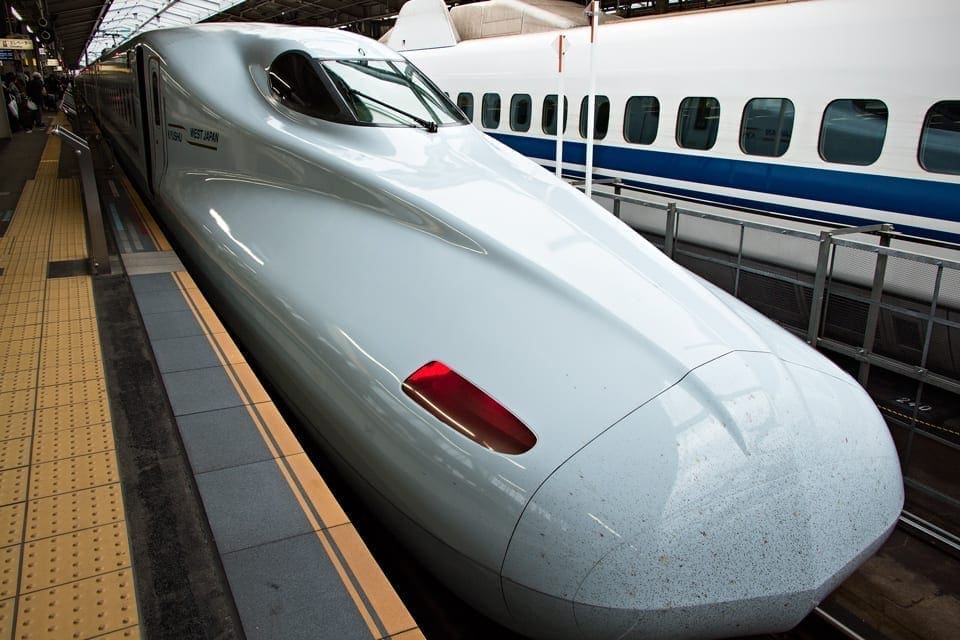
The most convenient way to get around Japan is travelling by train.
Japan Rail Pass is the most cost-effective solution for long-distance rail travel in Japan, meant only for foreign tourists to the country. It pays off the best when using Shinkansen for long-distance trips.
The pass allows unlimited travel on all JR-operated trains, except for the fastest category of Shinkansen (called Nozomi and Mizuho). Although from October 2023, it will be possible to add these two categories to the pass, too, for a small price.
JR pass comes in a 7-, 14- or 21-days validity. You can use it even for inter-city travel for example in Tokyo.
7) Camera and equipment

Japan is such an incredible country; you’ll definitely want to take tons and tons of pictures! At least we loved it!
So make sure to check that your camera and any other gear is there when packing for Japan.
8) Electronics adapters
The electrical outlets in Japan are like in the USA with two flat pins (types A and B) and they have 100V AC electricity in them. So make sure you have the correct adapters for your devices with you.
9) Cash
Even though Japan seems like such an advanced country, many places still only accept cash.
Withdrawal fees can get quite hefty (although, some banks like Revolut allow you to withdraw some sums without a fee) so make sure to get some Japanese yens before your Japan trip.
10) Travel insurance
Another one of the things that are covered in my essentials packing list article, but it’s so important that I love to repeat it.
I know all of us think that nothing will ever happen to us, especially when we’re on vacation, but that’s just simply not true. Your luggage can go missing on the way, the suitcase can get damaged (actually happened to us on the way to Japan), or you might get hurt.
It’s always a good idea to get travel insurance before your trip! And they’re generally not even that expensive. But medical care in Japan is.
So make sure to get that 20 euro insurance for your vacation! It’s better to not use it and “lose” 20 euros than not have a thousand euro bill for a medical check.
Packing for Japan depending on the season
Japan’s weather changes with each season, and that means packing differently for each visit. Whether you’re heading there to see the cherry blossoms in spring, enjoy the beaches in summer, admire the autumn colors, or experience the winter snow, it’s important to pack right.
This guide will help you decide what to bring based on the season of your trip, ensuring you’re well-prepared for whatever weather Japan has in store.
What to pack for Japan in autumn
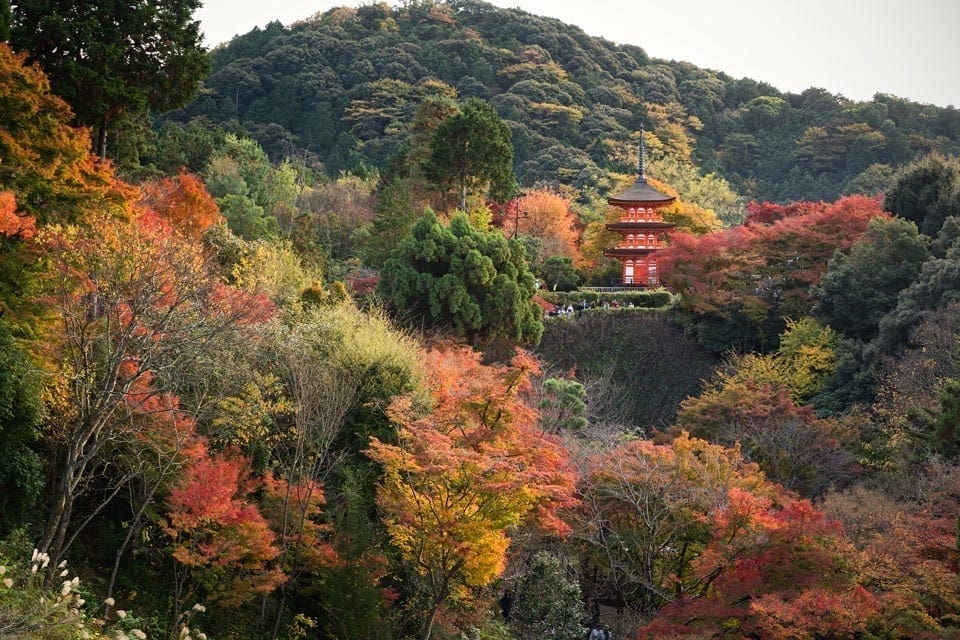
- Layers of clothing
- Waterproof upper layer or a raincoat
- Scarf
- Hat
- Gloves
- Waterproof shoes
The weather in Japan in autumn is quite mild and pleasant. It’s not exactly shorts and t-shirt weather, but it is pants, t-shirts, and a light jacket weather. Of course, unless you go at the end of November like we did (yey for autumn foliage!) – in that case, it’s a good idea to have some warmer stuff with you as well just in case.
Our itinerary shows you how to see the best of Japan in 10 days!
Since it’s autumn, there is a huge chance of having rainy days so make sure you take something waterproof when packing for Japan – a waterproof jacket or a raincoat. It’s not pleasant to be all wet.
And of course, waterproof shoes. Keeps your socks (and feet, of course) all nice and dry.
If you’re travelling to Japan at the end of November, consider packing winter stuff, too.
What to pack for Japan in winter
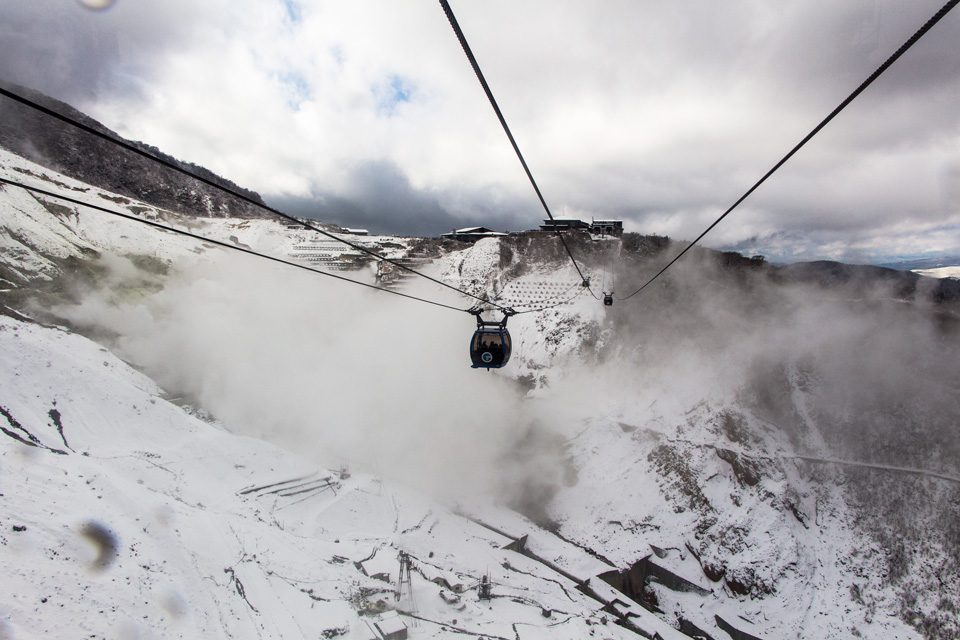
- Hat
- Gloves
- Winter jacket
- Waterproof winter shoes
- Warmer socks
- Paper napkins for the nose (and a face mask)
- Disinfectant wipes
- Warm middle layer
Since we accidentally got to enjoy Japan in winter as well, I can tell you what to pack for Japan in winter, haha! Just when we were arriving in Hakone for our ryokan stay and the Hakone loop, it snowed there.
Well, winter in Japan means snow and low temperatures, so make sure to pack accordingly. You will need a hat, gloves, a scarf, a winter jacket, and maybe even a warmer middle layer so that you’re not cold. And of course, make sure to have waterproof shoes so that your feet don’t get cold.
As I mentioned before – layering up in the winter might not be the best idea because then you have to struggle with loads of stuff when you go inside.
For me, cold weather means that my nose gets runny. If you’re similar, make sure to pack some napkins with you. And make sure to wear a medical mask if you get the sniffles – in Japan (and many other places in Asia) masks were worn before it became “cool” in the rest of the world.
What to pack for Japan in summer
Summer in Japan is very hot and humid, with occasional monsoon-type rains, so pack your clothes accordingly. That means, instead of jeans opt for some lighter fabric (linen is pleasant in the summer).
As for the rain, it’s nice to be prepared as well. Of course, a rain shower in the summer feels much nicer than in the autumn, but still, pack your rain jacket or a raincoat so you don’t have to walk around in wet clothes.
And of course, don’t forget the sunscreen. Burns during a vacation? What can be worse?
As for the bug spray – what can be worse than having to fight off a ton of mosquitoes? For that matter, make sure to bring some anti-itching cream as well. Just in case.
What to pack for Japan in spring
- Scarf
- Jacket
- Gloves
- Layers
Aw, the cherry blossom season! Spring is one of the most popular times to visit Japan because of the beauty of Sakura in bloom. That means – there’s going to be crowds!
As for the weather, march can bring some rain showers and may is the warmest month with the temperature highs being around 23C but the lows going quite low around 10C.
That means, bring layers. During the day a t-shirt might be enough, but in the evening it’s better to have a jacket. For me, 10 degrees mean a scarf (or a shawl wrap, which I personally prefer) as well.
Other useful things to think about when packing for Japan
- E-book reader
- Music apps such as Spotify with a playlist downloaded
- Japan-specific apps
- Netflix with your favourite shows downloaded
- Things so you can study or work
These things here are mostly for those long flights or train journeys so you have something to do.
Of course, most of the times you might be enjoying the view out of the train window. But sometimes, it’s not really that possible – for example, at night or when the rain is going like crazy.
So you will need some entertainment!
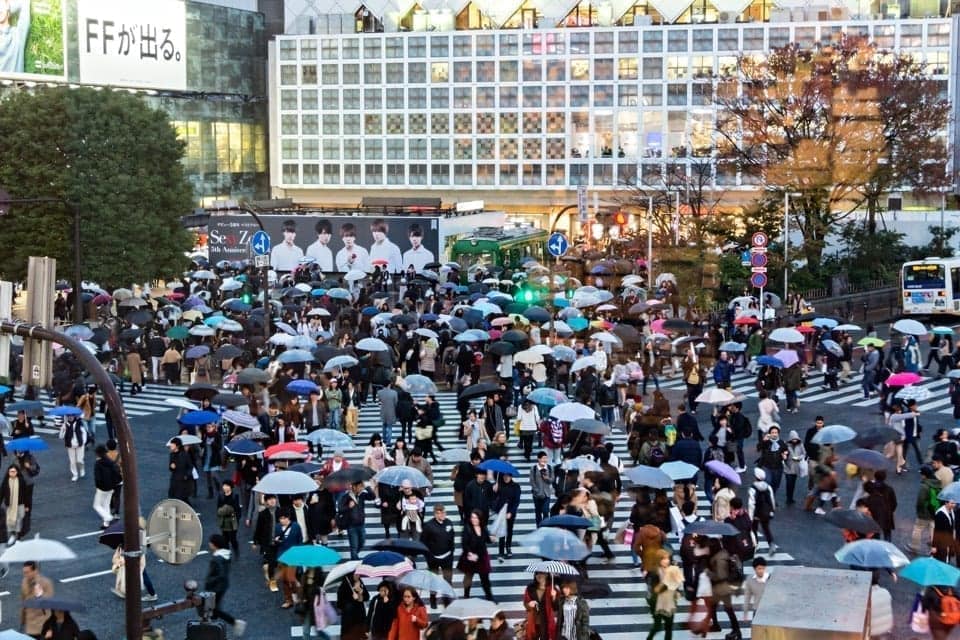
E-book reader
I used to be quite sceptical about having a specific device for reading books. Like, is it worth it? It wasn’t that bad to read my books on the phone.
But boy was I wrong!
I now carry my Kindle everywhere. It’s just so much more convenient to read on it! Much less pressure on the eyes.
Music app such as Spotify with a playlist downloaded
Take your music with you. For the downloads, you need a premium membership, but it’s quite nice to have your own music to listen to on long journeys.
Netflix/Amazon Prime/other streaming services with your favourite shows downloaded
Another thing you can consider is catching up on some movies or shows! Most of the streaming services allow you to download the shows for offline watching.
You should even consider getting yourself a VPN, which can help you to watch your favourite TV shows every time you are on the way. We use a SurfShark VPN, which works just great. So, in case, you are wondering about getting a VPN – we also have a promotional for you as well.
Mobile apps recommendation
Ok, this one is not for train journeys, but just to make your Japan trip easier.
Some useful apps to have are:
- Japan wifi auto-connect which helps you automatically connect to wifi all around Japan.
- HyperDia for your train journeys. On this app, you can see timetables, routes, and even buy tickets.
- Google Translate – kind of a lifesaver in a lot of situations since English is not that popular in Japan. I love the photo-translate function.
- And, of course, Google Maps. Download the maps for offline use!
8 Luggage and Packing for Japan tips
How to pack, what not to pack, what to do… it’s all here. The list below is generally about packing on any vacation. So feel free to use this inspiration on another journey!
1) Pack light
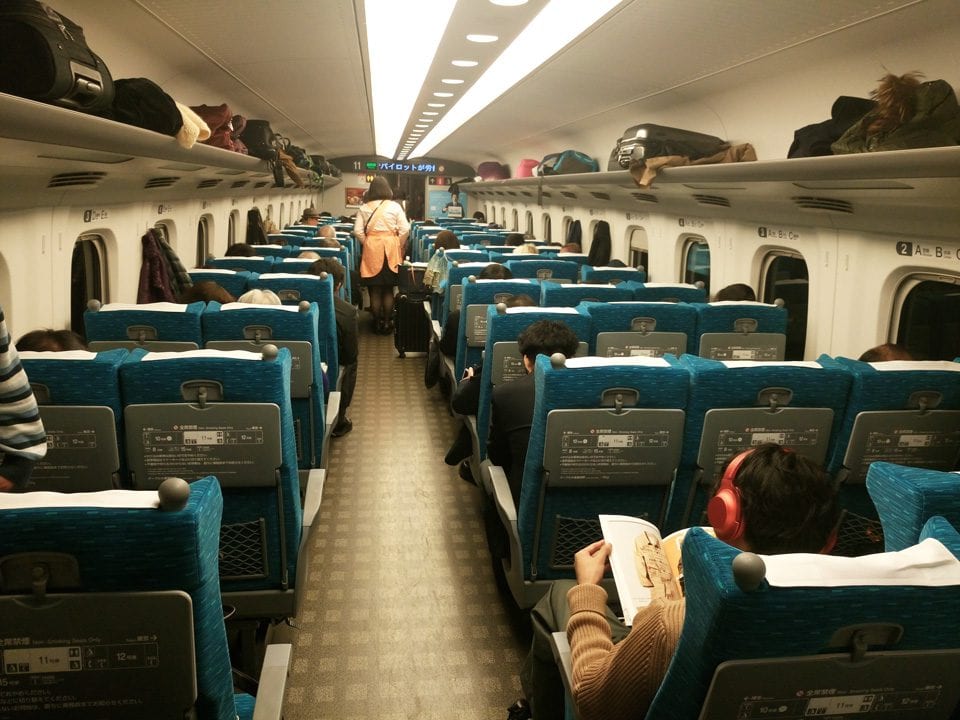
As I mentioned before, there’s not too much storage space for big suitcases on the trains in Japan. So make sure to pack as light as possible – there are airplane cabin bag sized storage spaces in the overhead compartments.
If you can’t manage to pack the minimum (no judgment, I’m the same, haha) consider using a luggage forwarding service. We didn’t use it, but I’ve seen it mentioned in many places with good reviews. The only problem with that is that it usually takes one or two nights to get the bags to the next destination.
2) Consider using packing cubes for packing your suitcase
Packing cubes are helpful for organizing your suitcase and using less space to pack more.
I still haven’t gotten around to ordering them (procrastination is awful sometimes!) but pretty much all of the nomad travel bloggers that I know and trust use them.
3) There are luggage storages in many places in Japan
If you have some time between the checkout in the hotel and your train that you’d like to use for, well, not sitting in the station and guarding your bag, use luggage storage.
Mostly, you’ll find them in the bigger metro or train stations.
It’s not just manned ones, but locker types as well. We used such in Kyoto.
Note: You can easily book luggage storage at UseBounce.com.
It’s really convenient to store your bag and just have the daypack!
Many hotels have luggage storage available as well, but unless your hotel is close to the station or the place you want to visit is close to the hotel, it might be a waste of time to use it.
4) Leave space for souvenirs!
Not a tip you’ll usually find on a blog, right?
But really, quite often I’ve found that I want to buy that bottle of wine (plum wine for Japan has a special place in my heart, btw) but just don’t have space where to pack it.
So make sure you have some space in the luggage.
Plus, the electronics in Japan are quite a lot cheaper than in other places.
5) Leave those heels at home
Generally, heels are not really worn in Japan, unless they are really low or a platform.
Keep in mind that you’re going to walk a lot – it’s much better to wear comfy shoes for that.
6) Pack light fabrics for your layers

Things such as merino wool or fleece for the winter and linen or cotton for the summer. They take way less space in the suitcase.
7) There are laundromats in many places
If you’re worried about not having enough clothes, know that there are places where you can wash them. Some hotel rooms even come with washing machines in them!
Just make sure to pack your own washing powder or liquid.
8) If you need to take prescription medicine with you, make sure to check it’s allowed
You might need to apply for “Yunyu Kakunin-sho” (import certificate).
Keep in mind that certificate approval by the Japanese government may take several weeks to process and should be received before bringing the medication or medical devices to Japan.
And some medicine that is allowed in other countries might be prohibited in Japan. It doesn’t matter that you need to take it regularly – you can’t take it with you if it’s prohibited. If you try to, you might get detained.
Check for more information on everything, including the list of prohibited medications, on the Japanese Ministry of Health, Labour and Welfare website.
Conclusion about Japan Packing list
Packing for Japan is not that much different than packing for any other place in the world, is it?
The main difference is that you should pack more conservative clothing, as that’s the norm in Japan. And it’s one of the few places in the world where they might actually care about how your socks look, haha.
I hope you found this list helpful! If you have any questions, don’t hesitate to ask them in the comments!



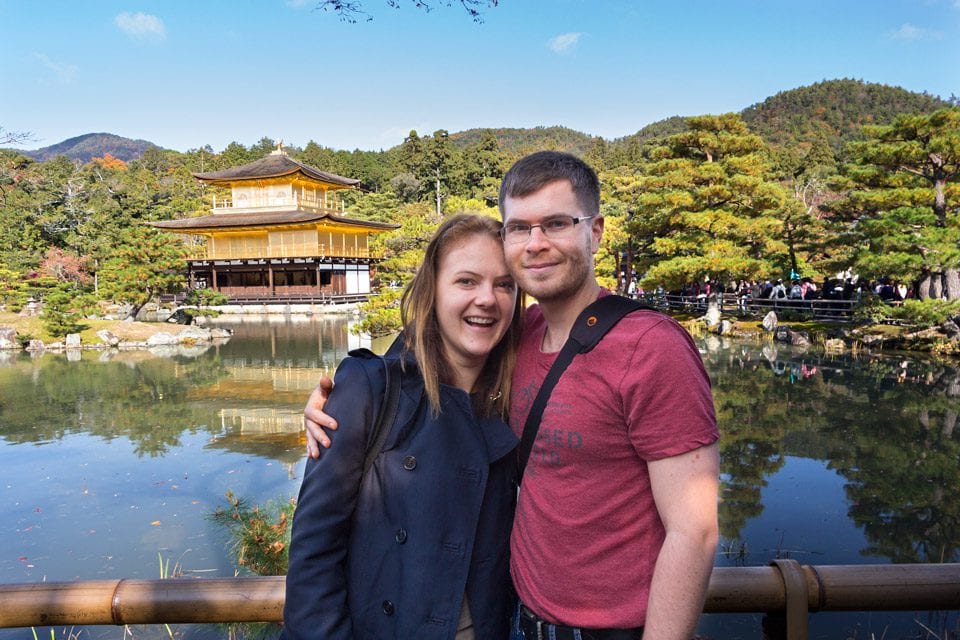





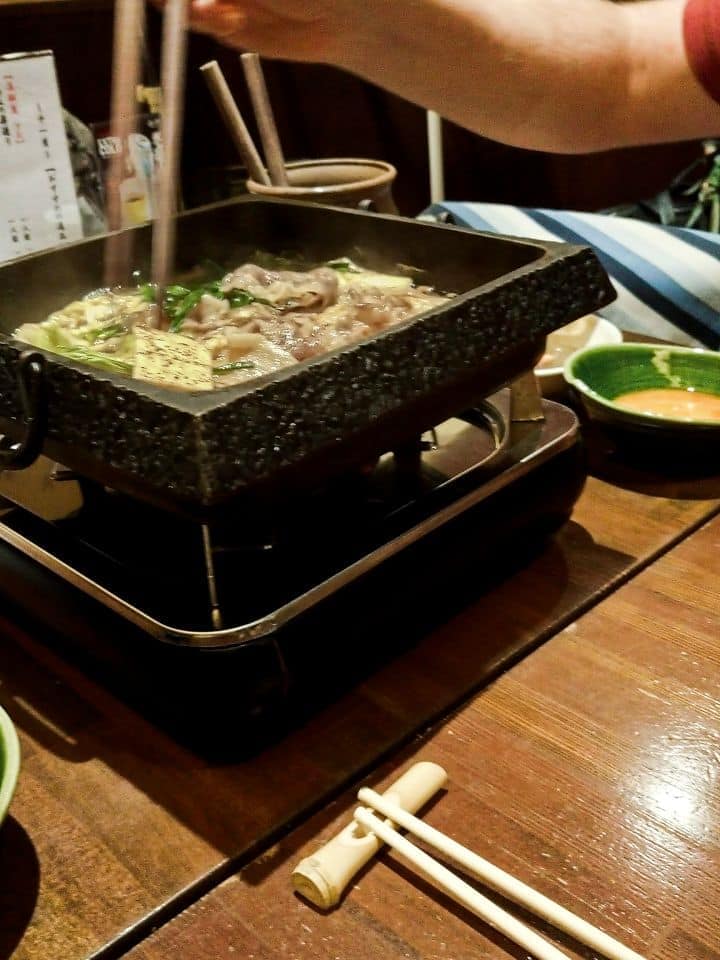
Oh my god, thank you so much for this. I’ve been reading blogs for a Japan trip for a month now and you are the first one to mention that medicine might be prohibited or need preapproval! Gonna have to dive into a research hole to check our meds, but without you, I would never have thought about it.
Hey Max,
I’m so happy I could help!
And yeah, it’s not that easy to find this info. And it’s generally a problem not too many people think about…
Cheers,
Kristine